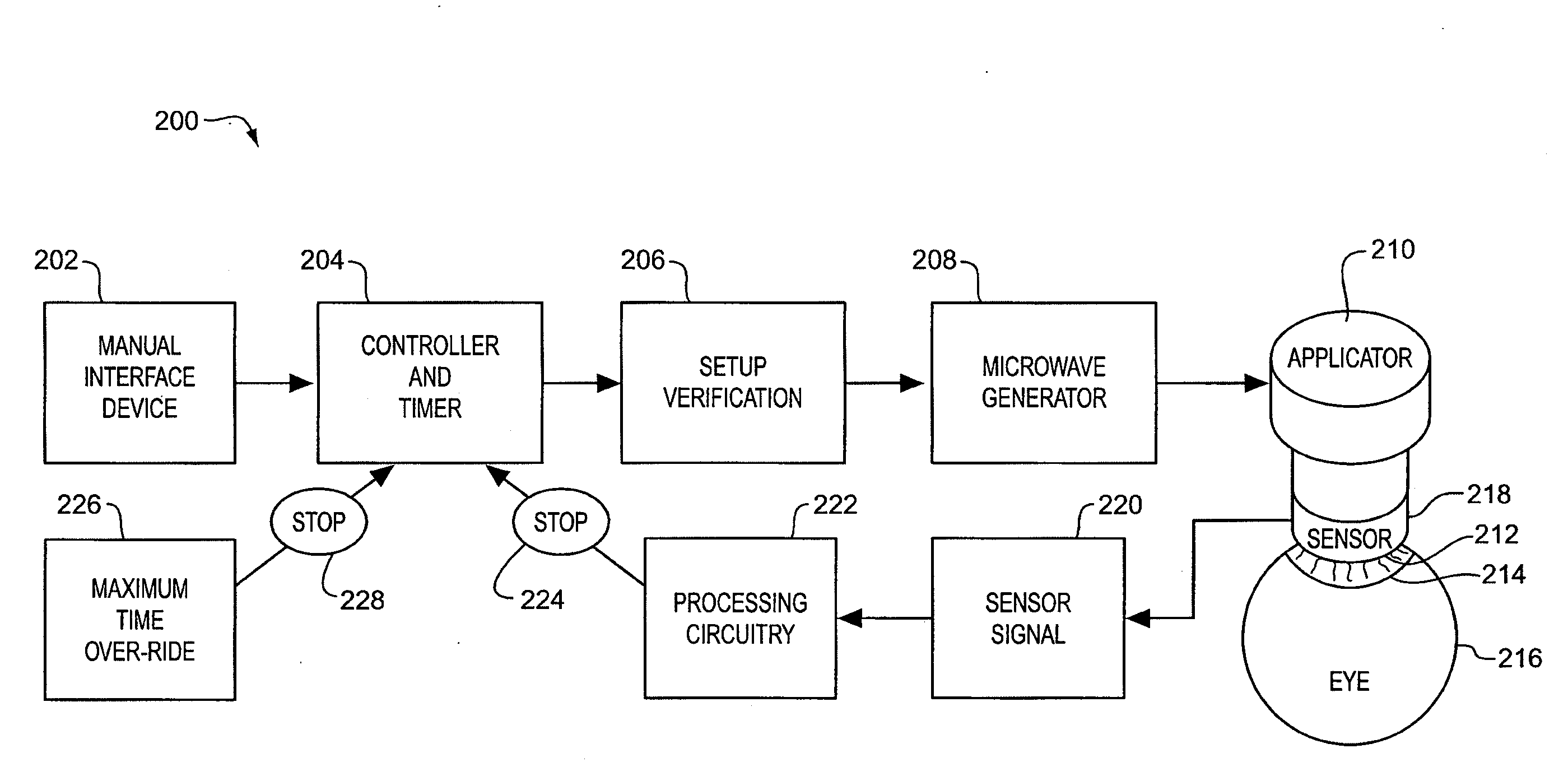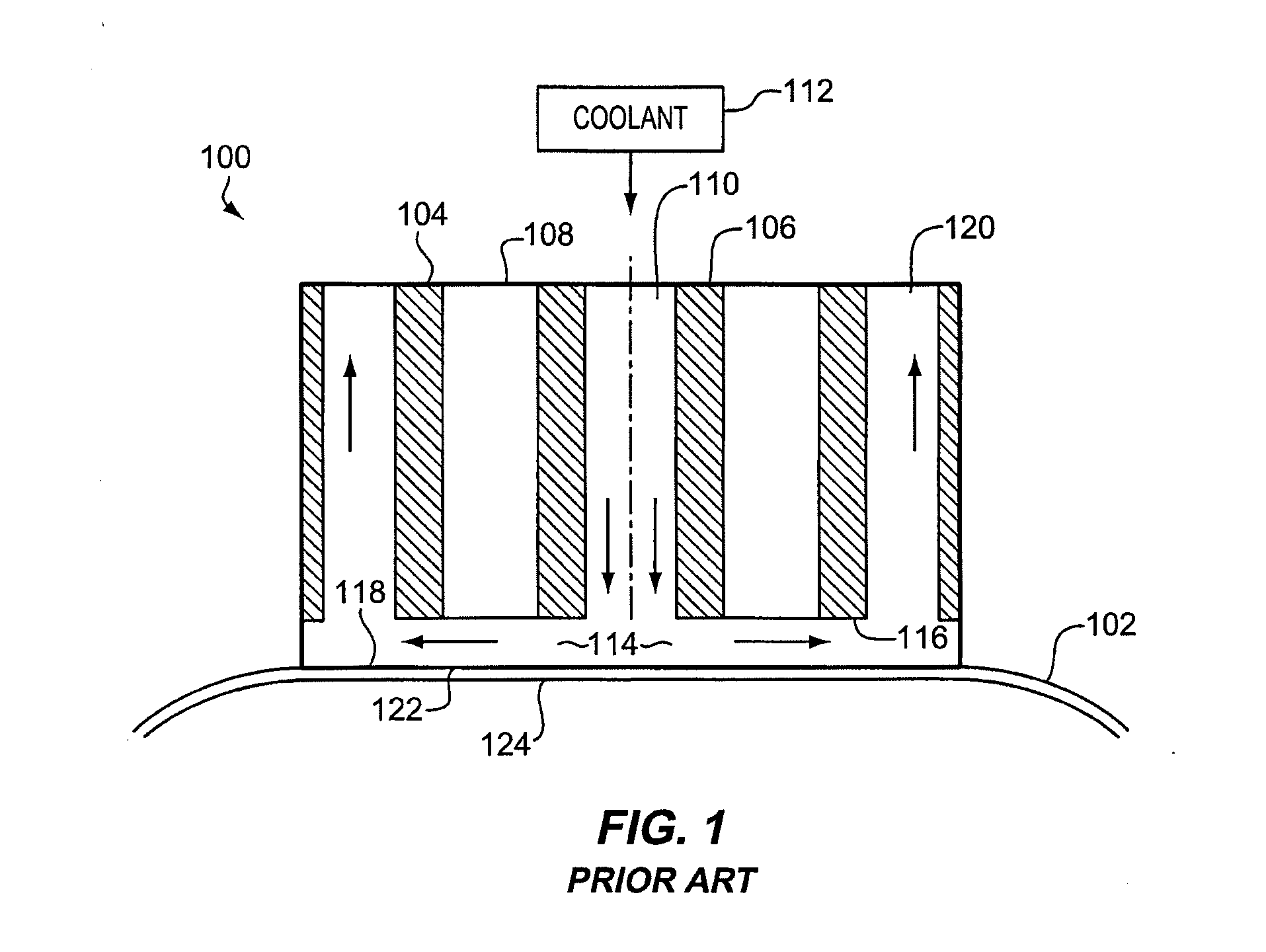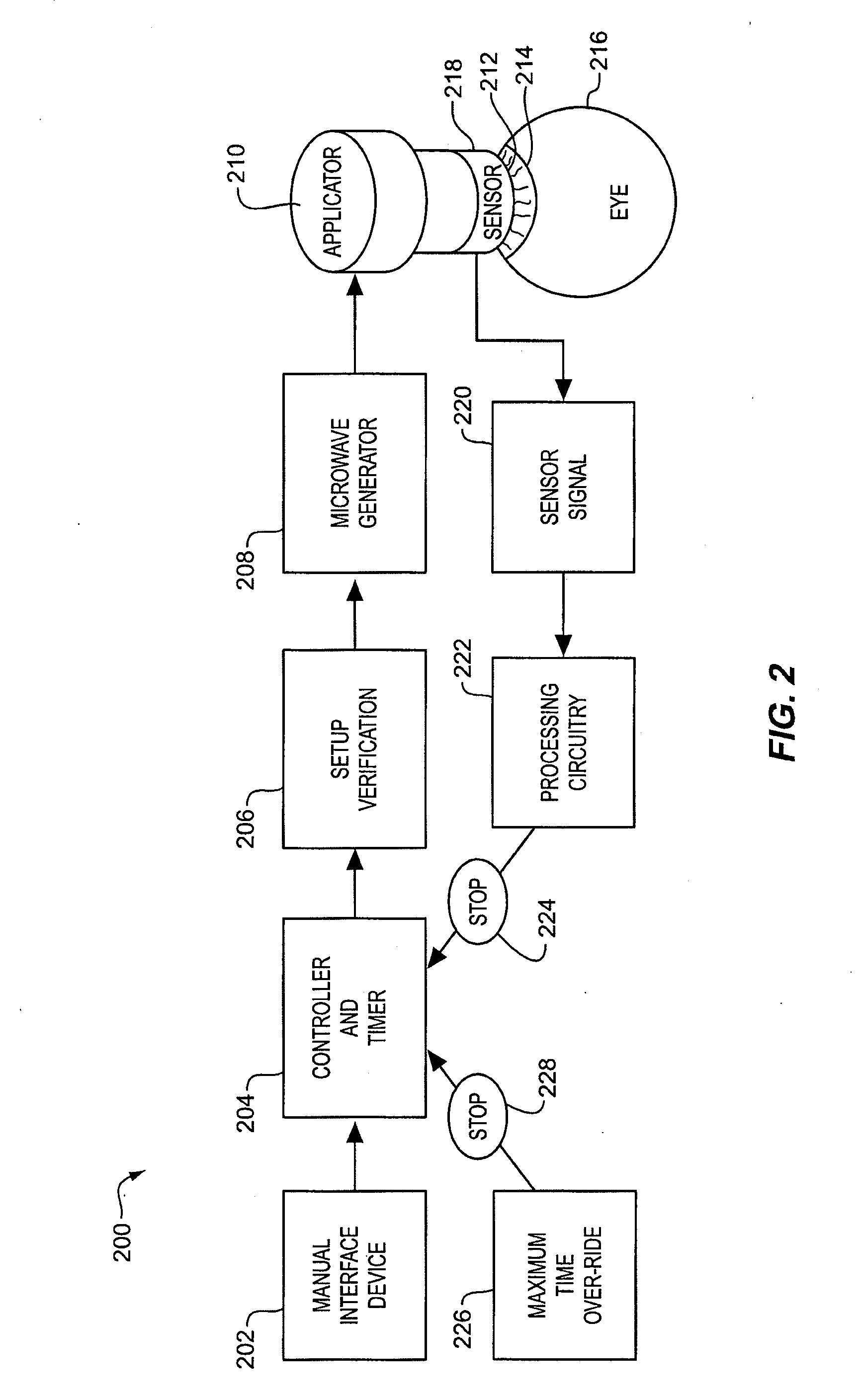Thermokeratoplasty Systems
a technology of thermokeratoplasty and system, applied in the field of keratoplasty, can solve the problems of reshaping the central cornea, requiring a healing period, stress that tends to reshape the cornea,
- Summary
- Abstract
- Description
- Claims
- Application Information
AI Technical Summary
Benefits of technology
Problems solved by technology
Method used
Image
Examples
Embodiment Construction
[0033]In FIG. 2, there will now be shown and described, by way of example and not by limitation, a thermokeratoplasty system 200 that operates by sensing a physical variable in an eye and providing sensed feedback affecting a vision correction modality. A physician or other medical worker manually accesses an interface device 202, such as a computer keyboard, that facilitates the selection and / or initiation of a treatment modality. The interface device 202 may request manual input, such as a predetermined amount of diopter correction that is required for a particular patient, baseline measurements of physical variables, astigmatism measurements, wavelength of microwave radiation, intensity of microwave radiation, selection of a treatment modality by specific selection or class of modality, and / or goals for adjusted physical variables obtainable as a result of treatment.
[0034]A programmable controller 204 accepts program instructions that optionally access user input data or program ...
PUM
 Login to View More
Login to View More Abstract
Description
Claims
Application Information
 Login to View More
Login to View More - R&D
- Intellectual Property
- Life Sciences
- Materials
- Tech Scout
- Unparalleled Data Quality
- Higher Quality Content
- 60% Fewer Hallucinations
Browse by: Latest US Patents, China's latest patents, Technical Efficacy Thesaurus, Application Domain, Technology Topic, Popular Technical Reports.
© 2025 PatSnap. All rights reserved.Legal|Privacy policy|Modern Slavery Act Transparency Statement|Sitemap|About US| Contact US: help@patsnap.com



